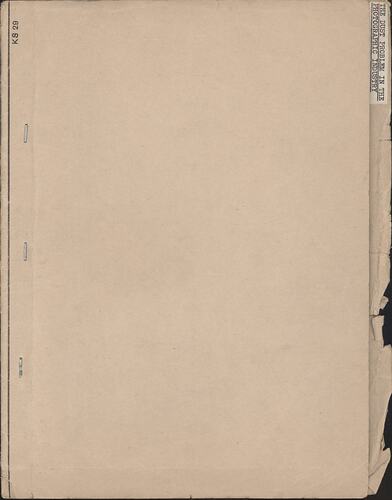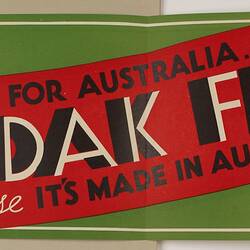Summary
Booklet reproducing the research paper 'The Dust Problem in the Photographic Industry', written by RGR Carnall, of Kodak Limited, United Kingdom, circa mid-twentieth century.
The pages are numbered, and look as if the paper was printed in a journal or company publication originally, but no source is obvious. The author was a staff member of the Manufacturing and Research Departments at Kodak Limited, United Kingdom. The photo-micrography was largely done by Mr CH Smith, of the Kodak Harrow Research Laboratories.
Part of a collection of research material and artefacts assembled by former Kodak Australasia employee Nigel Beale while he was writing Kodak Australasia's company history in the 1980s.
Kodak manufactured and distributed a wide range of photographic products to Australasia, such as film, paper, chemicals, cameras and miscellaneous equipment. Its client base included amateur and professional photographers, as well as specialist medical and graphic art professionals who used photography, x-ray and other imaging techniques.This item is related to the collection of products, promotional materials, photographs and working life artefacts collected from Kodak Australasia in 2005, when the Melbourne manufacturing plant at Coburg closed down.
Physical Description
26 page booklet printed one-sided on photographic paper, with 5 actual photographic prints stapled at the top of 5 pages at the back of the article, one photograph per page, in the Figures and Illustrations section. The booklet has a brown card cover, probably a small manilla file, indented on one side, with three metal staples in the spine and a typed label on the edge of the cover.
Significance
This item, which was issued in the United Kingdom where Kodak has a subsidiary, enhances our understanding of photographic research, manufacturing and retailing in Australia by outlining the history of production issues at Kodak - issues which would have influenced photographic manufacturing in Australia. This item also highlights the global nature of the Kodak company and the interactions that head office and each of the subsidiaries had with each other.
More Information
-
Collection Names
-
Collecting Areas
-
Acquisition Information
Donation from Barbara Beale, 07 Mar 2012
-
Organisation Depicted
Kodak Limited London, England, Great Britain, circa 1940s
A reference in the paper notes a 1935 publication, thus this paper was certainly written after this date, but probably before the 1960s, based on the curator's assessment. -
Inscriptions
Top right of part of back cover, typed, black ink with red underlining, on white adhered label: 'THE DUST PROBLEM IN THE / PHOTOGRAPHIC INDUSTRY' Top left, front of brown manilla file, printed, black ink: 'KS 29' First page, top right, handwritten, blue ink, 'KE Allen'
-
Classification
-
Category
-
Discipline
-
Type of item
-
Keywords
Photography, Manufacturing, Research Laboratories, Chemistry, Industrial Research, Dust Control Equipment, Quality Control, Making History - Kodak Collection

